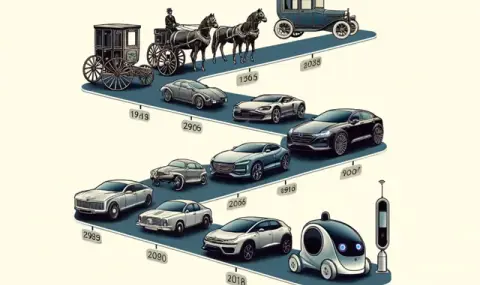Over the years, we have told you about almost all the changes in motor vehicles, but now we decided to delve into the evolution of their width. It is precisely the width of cars in question that is one of the curious metamorphoses in the history of the automobile, as it is influenced by cultural, economic and technological factors.
We begin our examination of vehicle width from a very long time ago - from Roman chariots to modern cars, and it is clear how changes in vehicle dimensions reflect the adaptation of transport to the needs of the population.
We start with the so-called Roman chariots, because they are one of the first examples of standardization in transport. The typical Roman chariot was about 1.4 meters wide, a size consistent with the distance between the hindquarters of two horses harnessed in front of the chariot, side by side. This width was also imposed by the road infrastructure of the Roman Empire, which included millions of kilometers of paved roads with the same dimensions.

It is curious that this width standard was preserved for centuries, even influencing the design of railway tracks, which were initially based on the same distance. After the Roman chariots came the so-called medieval and Renaissance vehicles, or in other words - carts and stagecoaches
During the Middle Ages and the Renaissance, a variety of vehicle sizes was observed. Carts used for agricultural purposes were often about 1.5 meters wide to be able to pass along narrow country roads.
Stagecoaches - the predecessors of modern buses - began to gain popularity in the late 17th century and their most characteristic feature was that they were significantly wider to accommodate more passengers. However, their width was limited by the dimensions of the roads and bridges and was about 2 meters. This is how we get to the first cars.

With the invention of the automobile in the 19th century, vehicle dimensions were transformed again. The first cars, such as the Benz Patent-Motorwagen (1886), were narrow - about 1.2 meters - because they were based on the design of horse-drawn carriages.
In 1908, the Ford Model T set a new standard in terms of vehicle dimensions. This mass-produced passenger car was 1.68 meters wide, making it suitable mainly for US roads. It was precisely because of the wide roads overseas in the 1970s that even wider cars appeared.

During the 1950s and 1970s, the width of cars increased significantly, especially in the United States. The reason was a combination of better infrastructure and changing consumer preferences. The 1970 Cadillac Eldorado, for example, is just over two meters wide, making it a symbol of spaciousness and luxury.
But cars are not only made for the USA, and gradually cars with higher standards of safety and comfort began to be imposed in the world, while at the same time cars began to offer more space for passengers and cargo. This was also the time when SUVs began to establish themselves as the most popular motor vehicles.

Today, the width of cars varies depending on their purpose. Compact city cars, such as the Fiat 500 (1.63 meters wide), are designed for maneuverability in narrow streets. At the same time, SUVs like the Tesla Model X (2.07 meters wide) offer space and comfort for families.
With the growing popularity of electric vehicles, car design is adapting to new requirements. Batteries located in the floor often require wider and lower chassis. In other words, from narrow wheelbases to wide SUVs. But the difference in so many years is not that striking.

The breadth of transportation has evolved over the centuries in response to technological innovation and social needs. From the practical Roman chariots to the spacious American cars of the 1970s and the electric cars that are now popular with us, transportation reflects both the historical and cultural context of its time.
The topic is being studied by Gabriel Todorov
